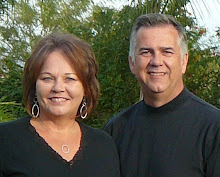The Footsteps of the Reformers
We left a sunny, warm Seefeld behind as we boarded the train for Munich, Germany. There were many miles of mountains and grassy valleys as we left Austria and entered Germany. Our hotel was close enough to walk to from the train station. Others from our tour had just arrived from the airport so we met a number of people right away – including a couple who live in Tea, SD – just a few miles outside of Sioux Falls. We later found out she works with someone from Heartland!
Monday morning we toured Munich, Germany. We especially enjoyed the glockenspiel in the city square and walking through the market. We toured two castles – Nymphenberg Castle and Neuschwanstein Castle. This is the castle Walt Disney used as a model for the castle he built in the Magic Kingdom. It took 17 years to build this castle and was only lived in for 187 days.
Nymphenberg Castle
Neuschwanstein Castle
Tuesday we went to Oberammergau, the site of the Passion Play. Although rain had initially been predicted, we were thrilled to have blue skies and sunshine. The 5-hour production was done entirely in German and neither of us understand German. We had the script in English to follow along. We didn’t need to understand the language because we know the story. It was so much more than the events of the last week of Jesus’ life – it included many Old Testament stories which paralleled circumstances in Jesus’ life. The theatre holds 5,000 people. Approximately one-half million people come to see the production in a summer. What an impact they are making.
Wednesday we first went to Augsburg. We went to St. Anne's Church, where Luther met the papal legate who demanded that Luther submit to the pope. The Fuggers, a Catholic family, were weavers who initially were very poor, but over a 200-year time span became very wealthy through the transportation of goods. Fuggerei was a social community established by the Fugger family for poor people. To live in the Fuggeri housing community one had to be Roman Catholic, poor, be willing to say prayers 3 times a day for the Fugger family members. The yearly rental fee was one Dutch guilder equal to 88 cents today. This Fuggerei community is still occupied today. We toured a Fuggerei home as it was originally and saw pictures of how they have been modernized.
Rothenberg was our next stop. Here we enjoyed walking the streets of this beautiful town, visited the Kriminal-museum, which houses Medieval instruments of torture and some ways to correct wrong behavior especially for women. We also walked on a stretch of the city wall.
We spent about 6 hours in the bus today as we travelled down the Romantic Road. We saw quaint little villages, churches and fields of grain and corn as well as many grape orchards. Everything is very green and clean.
Thursday morning we saw the coliseum built by Hitler in Nurnberg. It is still used today for a variety of events. Hitler also constructed a huge open stadium that holds up to 200,000. Here from the Zepplin Tribune he hosted rallies and promoted his vision for a new Germany.
Our next stop was in Heidelberg, a stronghold of German Reformed Protestants beginning in 1560. One of the great confessional statements of the Reformation, the Heidelberg Catechism was produced here in 1563. The Heidelberg Castle, a most impressive historic landmark of Germany, stands majestically overlooking the Neckar River. Heidelberg was not destroyed in WWII as the allies wanted it as a base of operations.
The church in Heidelberg where the catechism was most likely written.
The castle of Heidelberg
We visited three things relating to Martin Luther at Worms (pronounced Warms)– the bishop’s hall, the Luther Memorial and the Protestant Church. It was at the bishop’s hall, during the Imperial Diet in 1521, that Martin Luther challenged the entire Roman Catholic establishment by his refusal to recant the great doctrines of Protestantism. Friends of Luther ‘kidnapped’ him to Wartburg where he stayed for a year. While waiting here, Luther was bored and so he translated the Bible into German.
St. Peters Church - The Bishop's Hall where Luther was judged
was joined to the back corner but it was destroyed
The Luther Memorial was built in 1868 to honor him and other Protestant leaders (Calvin, Wycliffe, Zwingli, Tyndale to name a few). At his trial he declared, “Here I stand, I cannot do otherwise. God help me.” This may have had reference to the fact that the church and castle had stood strong against destruction. The song, “A Mighty Fortress Is Our God,” might also have had reference to the castle of Heidelberg.
The Protestant Church built 1689-1725 on the site of the former town hall. At the time that this church was built, it was thought that they were building on the site where Luther made his declaration. However, later it was determined that this was the wrong location for that but the structure remains, with beautiful carillons in the bell tour, the Apostles Creed written on the interior walls, and 15 stained glass windows visually depicting the 3 sections of the creed.
We spent our last night in Frankfurt before taking the train to Leysin, Switzerland for a few days of rest and relaxation.













The boys and I just watched a documentary about the German resistance to Hitler and the Valkyrie. It was neat to see Jim in the same place where it all happened. Germany has quite a history with the Reformation, WW2, and Jim's mother's heritage and my grandfather's heritage. We love the photos and information. Madi loves the photos of the castles. Thanks!
ReplyDelete